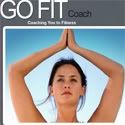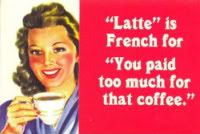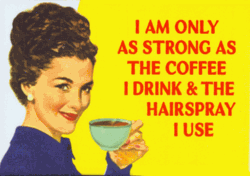 By Steve Edwards
By Steve Edwards
Welcome to Part II of our oh-so-basic nutrition class designed to give you an overview of basic nutrition and make healthy eating much simpler. Last time was our intro, and we're already changing the syllabus.
Today we're going to talk about what to eat. I've changed the schedule because of something that happened on the Message Boards this week, which hammered home just how far we've fallen in our basic understanding of dieting. In brief, a guy had heard that olive oil was good for him, so he was eating 12 tablespoons of it along with 4 ounces of chicken for lunch. Because of what he had read and heard about dieting, he actually believed he was doing something beneficial. Boys and girls, the situation has become alarming. Let's jump right into discussing what we should eat. When we're finished, I'm sure you'll know exactly what's wrong with that guy's lunch, other than that it sounds like a food challenge.
Your options: protein, fats, carbs, and . . . ?
People often ask me—and I'm not kidding—why they need to eat protein, carbs, or fat. I had one person submit a scathing letter saying something along the lines of "no professional" would ever recommend more than such and such amount of protein, fat, and carbs. The reason I bring this up is that the percentages she claimed "no professional" would ever exceed totaled 70 percent. The problem with her logic was that proteins, fats, and carbs are—basically—your only choices. They have to equal 100 percent of your diet.
Well, actually, they don't have to, but they certainly ought to. Let's look at a few other things that can make up part of your 100 percent. Mainly it's just alcohol. At 7 calories per gram, alcohol is loaded with calories and can, especially during the holiday season, make up a fairly high percentage of your diet. However, I'm not aware of any nutritionist who would recommend that it be much more than a trace percentage, given that alcohol has no nutrient value. Other things you can eat are pesticides, heavy metals in your water, dust, dirt, toys, etc. Most of these things don't have calories, but, even if they did, I think we can conclude that they should not make up a percentage of your daily diet, at least not purposely. Therefore, the percentage of proteins, fats, and carbohydrates in your diet should equal 99.99 percent or, ya know, 95 percent on girls' night out or during Super Bowl weekend.
What are they, what do they do, and how much of them should you eat?
I'd like to discuss this more fully, but remember, this class is only the CliffsNotes version.
Protein. Protein serves as building blocks for your body tissues. You need it to grow and repair your muscles and pretty much everything else. It's found in animal products and, to a lesser degree, in plants, making getting enough protein challenging for vegetarians, especially those who avoid dairy products.
What it doesn't do is give you energy. It's material, not fuel. A diet with too much protein does not help you function well. Too little protein, however, and you won't recover from the energy you burn.
It's found in abundance not only in animal products but also in grains and legumes, like rice and beans, respectively. This is why beans, rice, and soy products are so popular in cultures that tend to be vegetarian. It's also found in many vegetables, but because veggies contain so few calories, it's tough to make them a significant part of your protein intake, unless you use a juicer, but now I'm getting ahead of myself. We'll save juicing for a later date.
Proteins weigh in at 4 calories per gram.
Fat. Dietary fat, the kind you eat, should not be confused with body fat, the stuff that causes you to ask your husband or your wife, "Do I look fat in this?" That type of fat comes from an improper diet or lack of exercise—though it's usually both. The fat you eat is very important for many day-to-day functions. Fat:
* Fuels the body and is especially useful for long-term aerobic exercise.
* Aids digestion of fat-soluble vitamins A, D, E, and K, and promotes a feeling of fullness after eating.
* Helps regulate blood pressure, heart rate, blood vessel constriction, blood clotting, and the nervous system.
* Provides essential fatty acids, in particular omega-3, which help us with brain development, nervous system function, and eyesight. Many experts also believe fatty acids reduce the risk of arthritis, some cancers, depression, chronic fatigue syndrome, high blood pressure, and heart disease.
But before you rush out to stock your fridge with butter and cheese, be aware that 1) there are good fats and bad fats and 2) you don't need too much fat to satisfy the above list.
Bad fats include animal and trans fats, which should be severely restricted in your diet. Animal fats are pretty easy to avoid, since they are obvious. Trans fats are a man-made variety and tend to show up in processed junk foods, like cookies, cakes, chips, and stuff that may sit on a shelf for months or years. Fortunately, they are now required to be listed on labels, which have hurt sales so much that most companies have stopped using them.
Good fats come from plant sources, like olives, avocados, nuts, seeds, and so on.
You may have noticed a pattern: All the foods mentioned above tend to be filling. That's because they are what's termed "nutrient dense." Fat has more than twice the calories per gram than carbs and protein. You don't need much in their natural state. And condensed fats, like oils and butter, should be used sparingly indeed.
Fats weigh in at 9 calories per gram.
Carbohydrates. Maligned and misunderstood, carbs are probably the simplest foods to understand. They are fuel for your body, plain and simple. Carbs help you do stuff, as in they help you stay active. The more stuff you do, the more carbs you need to eat. Conversely, the lazier you are, the less you need to eat.
Carbs basically break down into glucose—blood sugar—in your body, which provides energy for both your muscles and your brain. Unlike fats, there aren't really good and bad carbs. Different types suit you better at different times, depending on—you guessed it—what sort of stuff you happen to be doing.
Carbs mainly come from plant sources, with milk products being the primary exception. In nature, plants have something called fiber, which is the part of the plant we can't digest. The rest of the plant will become blood sugar—fuel—in our bodies, while the fiber will help regulate how we use it. Fiber is important stuff. It not only helps us digest nutrients, it cleanses our digestive tracts and soaks up excess cholesterol.
The "bad carb" moniker comes from those carbs without fiber—things like simple sugars (candy)—and carbs that have been stripped of their fiber—things like white rice, some cereals, fruit juices, pastas, etc., etc. These foods aren't really bad, per se; they are just bad most of the time because they speed into your system and cause an insulin spike, or what we call a sugar rush. Unfortunately, and where the negative association comes from, we tend to consume sugars at the worst times, such as when we're sitting around at movies, watching TV, at work, etc. Insulin spikes during these times can lead us into a vicious cycle, which we'll look at a bit deeper during our dessert session.
But there are times when a sugar rush is advantageous, like during or immediately after sports. At these times, you want an insulin spike because it will help you recover faster by rushing nutrients back into a system that you've depleted by doing exercise. The quicker you recharge your body's glycogen (sugar) stores, the less damage your muscle tissue incurs from the workout and the quicker you recover. This is why "sports foods" tend to be sugary, and why Gatorade has no business as a regular part of your diet. Sports foods are for sports, only, and I don't mean watching sports.
At all inactive times you should opt for the natural version of carbs, complete with fiber, like whole fruits, fresh veggies, whole grains, legumes, sweet potatoes, etc. This will not only keep your energy level more consistent, it will also keep you from craving more sugar. While you need carbohydrates, you only need enough to keep your blood sugar levels stocked up. Your body can't store extra carbs, so it stores them as fat—and not as good dietary fat, but in adipose tissue, which is the kind of fat that might cause your husband to lie to you about how you look in that new dress or your wife to lie to you about how tight that belt really looks.
Carbs weigh in at 4 calories per gram.
How much of each do you need?
The one key piece of advice to take from this class is this: You should eat for what you do each day. Let me use a simple analogy. How much fuel do you put in your car when you don't drive it? How much when you do?
This doesn't exactly equate. You are not a machine, plus you're always on. But the fuel example is relevant. When you are active, you burn more glycogen and, hence, need to eat more carbs. Carbs should be the most variable item in your diet. If you've been hiking through the Grand Canyon, you may eat double, or even triple, the amount of carbs you'd eat than during a day at the office. Your other nutrients don't change as much. You need more protein if you are causing more muscle breakdown, but only so much. Carbs are literally burned off.
How much is quite variable. A muscular athlete will burn more fuel at rest than someone who is out of shape. With my clients, I tend to start them at 40 percent carbs, 30 percent protein, and 30 percent fat, and then adjust as necessary. This varies by the individual, but this ratio seems like the best average place to start.
Keep in mind that your diet is always a moving target. As you change, so does your nutrient requirement. People often ask me, "Can't you just tell me exactly what I should eat every day?" My answer is, "No."
A person trying to change his or her body composition (lose or gain weight) will eat differently than someone trying to maintain it. And everyone, no matter what his or her goal is, should eat differently on days when he or she does different things. It's not as simple as "calories in, calories out," but that cliché is not a bad ballpark figure to think about while deciding what, when, and why to eat.
Here are simple guidelines. Of course, results vary because all of our bodies are different to a degree. But we're also similar, so using these guidelines as a starting point will work for most people. In the end, no one will be better able to tell you what you need than you will. You have to learn to listen to your body's signals and adjust.
* Overweight and out of shape. This is the only time I recommend a "low-carb" diet. A diet of 40 percent to 50 percent protein, 30 percent fat, and 20 percent to 30 percent carbs can be effective in the early stages of a transition.
* Overweight and in decent shape, or not too overweight and in bad shape. A now-fairly-standard ratio of 40 percent carbs, 30 percent protein, and 30 percent fat.
* Ideal weight and fit. 50 percent carbs, 25 percent protein, and 25 percent fat. This is probably what I personally average, but consider that my diet varies wildly. On days like today, when I sit in front of this computer for hours on end, carbs might be only 30 percent to 40 percent of my diet. On a day I'm riding my bike for 6 hours, they might make up 70 percent. My protein and fat intake won't change too much. My calories might go from 2,000 to 6,000, with most of this difference being carbs. I'm more active than most people, but my radical example will, hopefully, make this idea easier to understand.
Vitamins and minerals
We left these out of today's discussion. While they are a big part of your nutritional equation, you're likely to get enough if you use the above guidelines to eat. These are found in abundance in all natural foods. Processing foods ruins their nutrient values, so these foods often have nutrients added to them. But there is no guarantee that manufacturers have added good nutrients—you can't beat natural foods for ensuring quality and bioavailability. When we eat enough natural foods to support our activities, we generally get plenty. People who are cutting calories, exercising excessively, or eating a lot of processed food should consider supplementing. There are many different ways to choose vitamin and mineral supplements. Beachbody's ActiVit® is a vitamin supplement with some added performance ingredients, while P90X® Peak Health Formula is a vitamin and mineral supplement. The upcoming Shakeology® formulation not only has all the vitamins and minerals you need, it also has a probiotic and complete greens formula blend—but now we're getting ahead of ourselves.
Now let's get back to that guy in the intro. His lunch consisted of 4 ounces of chicken, which is mainly protein with a little fat. Olive oil is a healthy fat. But 12 tablespoons is around 1,500 calories. So we're looking at a nutrient ration of around 12 percent protein, 0 percent carbohydrate, and 88 percent fat in a lunch approaching what is probably 80 percent of the calories that guy should eat that day. It doesn't take a nutritionist to figure out that this guy is going to have a problem reaching any of the nutrient ratios discussed above. That is unless he, quite literally, loses his lunch, which seems pretty likely.
That's it for today. Next time, we'll get back on track of sorting out what advertisers mean as we're sorting through all those catchy slogans at our local supermarkets.







































